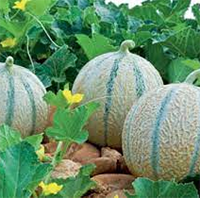
Cantaloupe melon genome reveals 3D chromatin features and structural relationship with the ancestral Cucurbitaceae karyotype.
Clement Pichot, Anis Djari, Joseph Tran, Marion Verdenaud, William Marande, Cecile Huneau, Veronique Gautier, David Latrasse, Sandrine Arribat, Vivien Sommard, Christelle Troadec, Charles Poncet, Mohammed Bendahmane, Judit Szecsi, Catherine Dogimont, Jerome Salse, Moussa Benhamed, Mohamed Zouine, Adnane Boualem, Abdelhafid Bendahmane.
Read more
Journal: IScience
https://doi.org/10.1016/j.isci.2021.1036
Abstract
Cucumis melo displays a large diversity of horticultural groups with Cantaloupe melon the most cultivated type. Using a combination of single-molecule sequencing, 10X Genomics link-reads, high-density optical and genetic maps and chromosome conformation capture (Hi-C) we assembled a chromosome scale C.melo var. cantalupensis Charentais mono genome. Integration of RNA-seq, MeDip-seq, ChIP-seq and Hi-C data revealed a widespread compartmentalization of the melon genome, segregating constitutive heterochromatin and euchromatin. Genome-wide comparative and evolutionary analysis between melon botanical groups identified Charentais mono genome increasingly more divergent from Harukei-3 (reticulatus), Payzawat (inodorus), and HS (ssp. agrestis) genomes. To assess the paleohistory of the Cucurbitaceae, we reconstructed the ancestral Cucurbitaceae karyotype and compared it to sequenced cucurbit genomes. In contrast to other species that experienced massive chromosome shuffling, melon has retained the ancestral genome structure. We provide comprehensive genomic resources and new insights in the diversity of melon horticultural groups and evolution of cucurbits.
